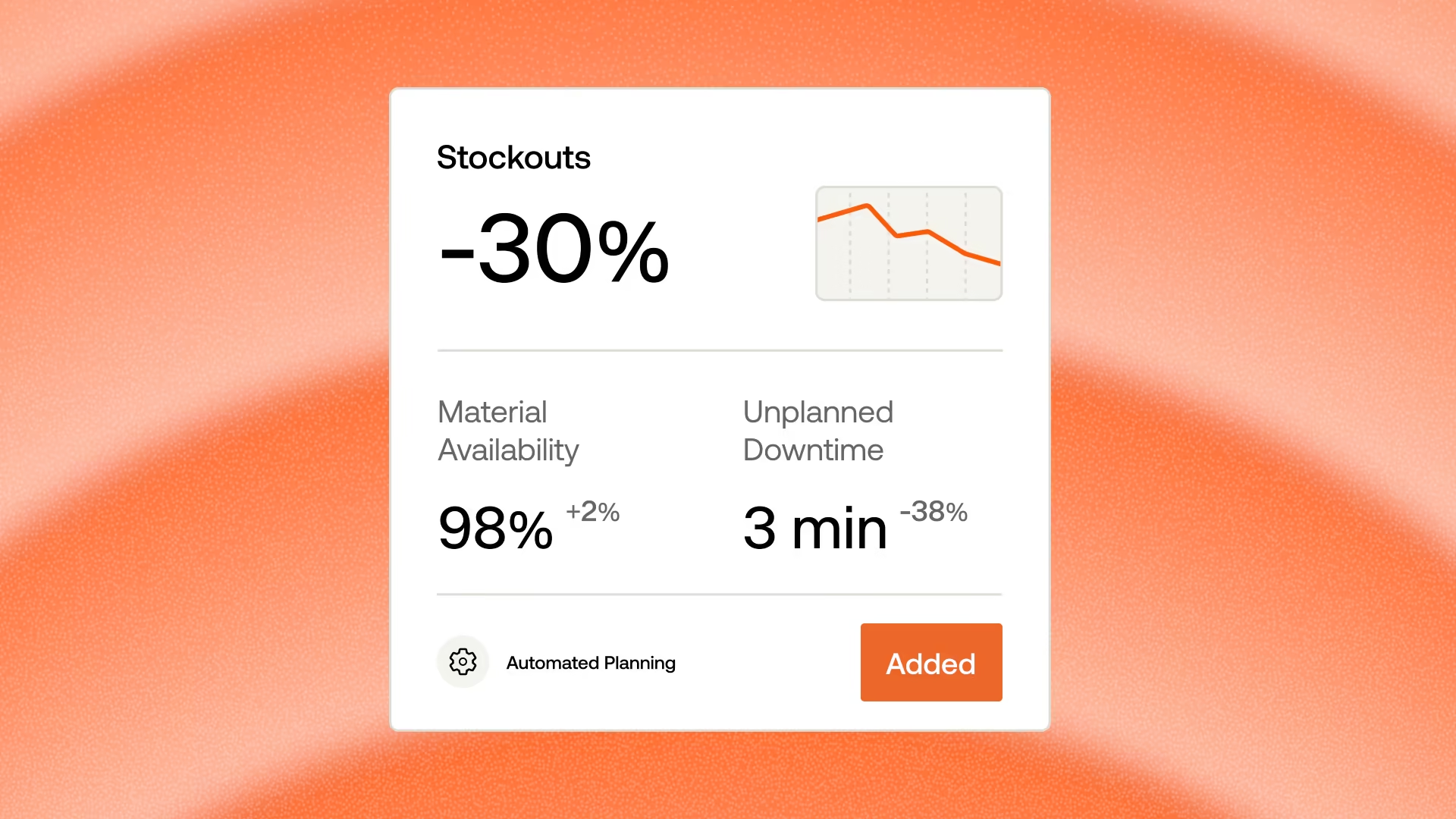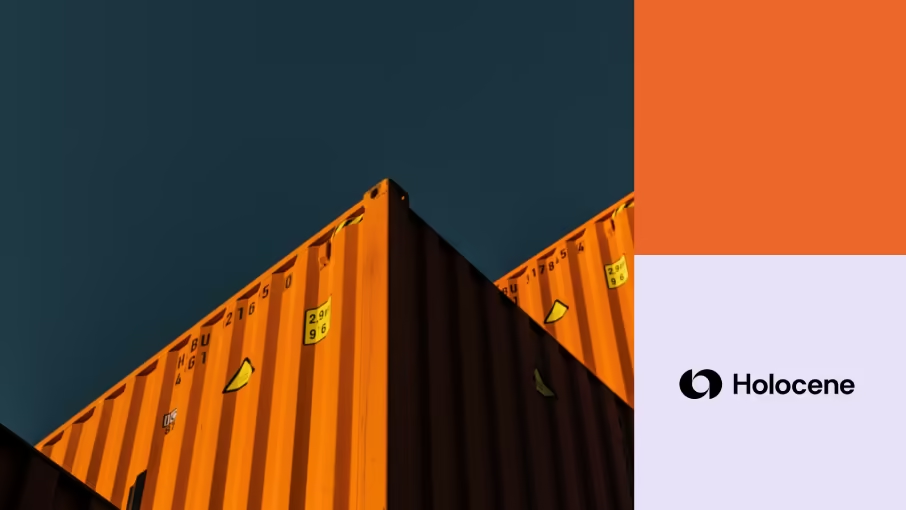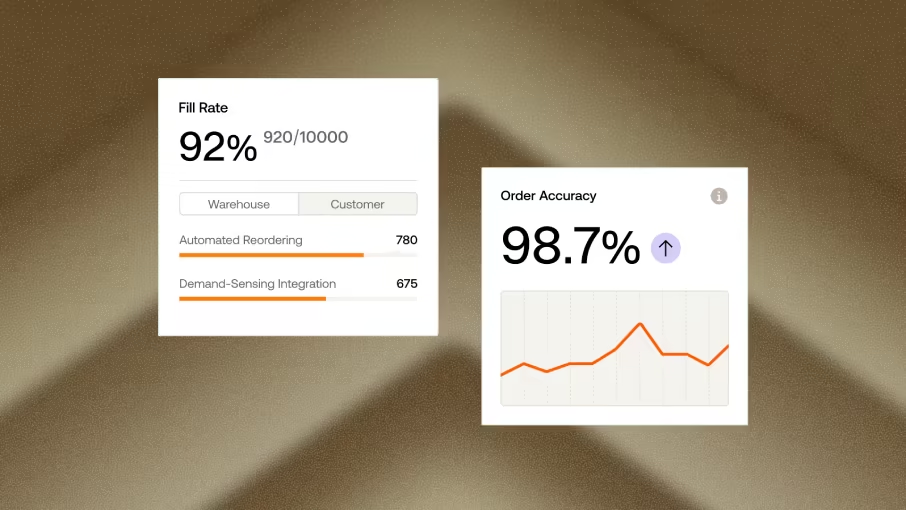Avoid Stockouts and Overstock with Smarter Raw Material Inventory Controls
Avoid costly stockouts and overstocks with smarter raw material inventory controls that improve planning, reduce waste, and boost efficiency.

Maintaining consistent production in a plant is a function of many inputs. Most important are the availability of raw materials and packaging materials, manpower planning, and machine availability. Managing raw material inventory is a critical part, as one single RM can stall the production of 10s of finished good SKUs. Hence, Material Planning and Procurement are seen as critical functions of the supply chain. One wrong step and it can directly impact customer service.
According to a survey, 69% of online shoppers are likely to switch to a competitor if a product is out of stock, resulting in significant sales losses. Meanwhile, excess inventory can raise storage costs by 20–30% and drain cash flow. Too much inventory can tie up capital, reducing financial flexibility. Clearly, managing and balancing both sides of the problem is crucial, but it is also difficult. Maintaining optimal inventory levels is essential to avoid both shortages and excess, ensuring efficient operations and financial health. Let’s double-click on the cost of getting these wrong.
The High Cost of Getting Raw Material Inventory Wrong
Without question, getting raw material inventory wrong is expensive. For manufacturers, production stops due to material shortages drive up downtime costs. One analysis found that unplanned downtime drains approximately 11% of annual revenue for the 500 largest companies, resulting in about $1.4 trillion in losses.
A single supply chain disruption can be severe. The 2021 chip shortage cost the global automotive industry $210 billion and resulted in the loss of 7.7 million vehicles. Globally, retail stockouts result in approximately $1 trillion in annual missed sales. McKinsey estimates that supply disruptions cost the average company 45% of one year’s earnings over a decade, mostly due to material shortages.
In short, stockouts result in lost sales and idle factories; overstocks waste money. The total cost of stockouts and overstock includes not only direct financial losses but also indirect impacts such as decreased customer satisfaction and increased operational expenses. Calculating ending inventory — by adding beginning inventory and purchases, then subtracting the cost of goods sold — is essential for accurate financial reporting and helps companies assess their inventory value at the end of an accounting period.
It’s not just large corporations that hurt. Small and medium-sized businesses get impacted even more. 42% of SMBs experience overstocking, which adversely affects their efficiency and cash flow. Raw material inventory is reported as a current asset on the balance sheet, so accurate valuation is crucial for reflecting a company’s true financial position and ensuring compliance with accounting standards.
Regardless of size, poor inventory management can have negative consequences, such as lost customer trust, operational inefficiencies, and long-term damage to brand reputation. What leads companies into situations where they are unable to manage raw material inventory properly? Let’s understand this better.
5 Reasons Why Stockouts and Overstock Happen
If avoiding stockouts and overstock matters so much, why do they happen in the first place? Raw material inventory is complex, and common mistakes trip up many businesses:
Inaccurate Data and Forecasts
Bad information drives many stockouts. Your planning might list supplier lead time as 25 days, but actual shipments take 35 days. That gap means shortfalls. Human error during manual data entry or inventory counts can also lead to discrepancies in stock levels, resulting in stockouts or mismatches. Outdated forecasts or static lead times mean you plan for a world that doesn’t exist.
Using historical sales data is crucial for improving forecast accuracy, calculating reorder points, and optimizing safety stock levels. Longer real lead times or unexpected demand leave you empty-handed. Conversely, if forecasts overshoot and you don’t adjust, you’ll over-order, filling warehouses with excess. Accurate, up-to-date data is essential. Technical problems, such as system failures or data synchronization issues in computerized inventory systems, can also cause inventory inaccuracies.
Lack of Visibility and Slow Communication
Supply chain disruptions often lead to stock shortages. A delayed shipment or factory problem you learn about too late can derail production plans. Relying on manual updates or periodic check-ins means discovering problems after they cause shortages. Without real-time information sharing, planning stays outdated, and errors repeat.
Implementing automated systems to track inventory can provide timely alerts about low stock levels, helping to prevent shortages and optimize reordering processes.
“Just in Case” Buffer Stock
To prevent stockouts, some companies maintain a buffer stock of extra inventory, ensuring they are prepared for unexpected demand. While a cushion is important, over-relying on safety stock can mask issues and increase costs. Maintaining less stock can improve inventory turnover and reduce costs. Excessive stock ties up cash and increases storage expenses by 10%–20% yearly, hurting profits. Cash tied in inventory reduces financial flexibility and can impact other business operations. Overbuying “just in case” leads to expensive overstock.
Supply Chain Disruptions
Even the most effective inventory plans can be disrupted by unplanned and unexpected external events. Raw materials supplies may be disrupted by natural disasters, political events such as wars, or other logistical nightmares. The takeaway is that the unexpected is the new norm. It is simply a matter of how quickly you can identify them & take the right actions.
Siloed Decision Making
Often, inventory management is viewed as “the procurement team's problem” or simply a line item on the finance report. In reality, inventory sits at the intersection of planning, procurement, logistics, and finance. If these departments aren't on the same page, stock levels can swing out of control. For instance, sales may promise a client something without actually checking inventory, or procurement may not be aware that a production change impacts material needs. Making raw material inventory a cross-functional priority ensures that everybody, from the factory floor to the finance office, knows the plan and exactly where it stands.
These factors make it hard to get the inventory right. But smarter controls can break this cycle. Let’s understand these in more detail next.
7 Smart Inventory Controls to Avoid Stockouts and Overstock
How can you manage your raw material inventory more effectively, avoiding shortages and excess? The answer lies in implementing better inventory controls, developing practical strategies, and utilizing tools that provide precision and real-time insights. Here are proven approaches:
Real-Time Visibility & Data Updates
Don't let planning run on stale data. Most companies have a data system built with daily/weekly reporting in mind. Instead, when something goes awry, like a supplier delay, a longer-than-planned transit, or a demand increase, your system should notify you immediately. Real-time data closes the gap between reality and plan. For instance, if a shipment is delayed, a smart system flags the issue and adjusts the production schedule/reorder point accordingly. Companies using real-time data end costly guesswork. Stay updated daily. If you rely on supplier emails or portal updates, automate your information feeds.
Accurate Lead Times and “Self-Correcting” Plans
Ensure your system learns and adapts. If a lead time increases from 20 to 30 days, your ordering logic should reflect this change immediately. Smarter control means self-updating master data. Modern tools (like Holocene’s) maintain the accuracy of these parameters without manual intervention. The result: you order the right amount at the right time, based on reality.
Right-Size Safety Stocks
Rather than blanket safety stock, calculate the right amount for each material based on demand variability and supplier reliability. Review levels regularly. Many companies find they can reduce excess while staying protected. For critical items, maintain a two-week supply; skip six months' worth across the board. Be precise, not paranoid. This frees working capital and reduces holding costs without exposing you to unexpected risks.
Better Demand Forecasting (with a Grain of Salt)
Demand forecasting will never be perfect, but new tools improve accuracy. Use historical data, market trends, and AI to refine forecasts. Companies using these tools cut inventory by 10–15% while meeting demand. Even the best forecasts need real-time adjustments. Forecasting is the base; execution data is the reality check. Let systems instantly reconcile forecast and actual updates.
Segment and Prioritize Inventory
Not all raw materials are equal. Identify your “A-list” critical materials and manage them closely (similar to ABC analysis). These may need higher safety stocks or backup suppliers. Less crucial items can follow a just-in-time approach. Focusing on key materials reduces risk. ABC methods boost inventory efficiency—don’t treat a 5-cent screw like a unique, single-source component.
Cross-Functional Coordination
Break silos. Make inventory control a joint effort of purchasing, planning, finance, and warehousing. Regular meetings or dashboards keep everybody up to date and connected. Planners can adjust proactively if they have real-time status data. Stability in planning facilitates better negotiation in procurement. Visibility of cash flows helps finance. Collaboration avoids inventory surprises.
Leverage Smart Technology (But Fix the Data First)
Modern inventory systems, IoT sensors, and supply chain platforms enable you to track stock precisely. Automation can flag missing shipments and orders at set levels. However, technology is only as effective as the data it processes. If your tool runs on incorrect information, it makes worse decisions more quickly. Clean and update your basic data, then automate. Companies using automated systems cut stockouts by 30%, thanks to real-time tracking.
With these controls, shift from a reactive approach to a proactive one. Instead of guessing, gain a clear view of needs and status. Make inventory work for you.
5 Payoffs of Better Raw Material Planning: No More Surprises, Better Performance
Better raw material inventory management improves your entire operation, not just through cost savings, but by making your business leaner and more responsive:
Fewer Stockouts = No Stalled Production
Keep lines running and customers satisfied. Consistent material availability means on-time production and delivery, high satisfaction, and steady revenue.
Less Overstock = More Cash and Space
Reducing excess inventory frees up capital and utilizes resources more efficiently. That cash can be invested elsewhere. Warehouses are easier to manage. Optimized inventory boosts cash flow and cuts storage costs.
Cost Savings on Emergencies
With better planning and real-time adjustments, last-minute orders and emergency premiums can be reduced. This saves money. Two-thirds of companies experience monthly unplanned downtime, costing an average of $125,000 per hour, with a significant portion attributed to shortages. Preventing stockouts also prevents these costly stops.
Improved Cross-Department Efficiency
When inventory is controlled, every job is easier. Procurement buys optimally, not in panic. Planners avoid crisis mode. Finance sees cash impacts clearly. Sales can sell confidently. Smooth inventory control keeps operations running efficiently.
Ability to Implement Just-in-Time (JIT) Reliably
JIT requires a high level of trust in the supply chain. Smarter controls build confidence. When you trust parts to arrive as scheduled and catch issues early, you can run lean without risk. Companies with strong inventory management practices weathered recent disruptions more effectively. With good data and quick reaction, JIT is achievable, saving on carrying costs and avoiding stockouts.
Smarter inventory control enables you to maintain optimal stock levels without wasting resources on excess inventory. It's the sweet spot for a resilient supply chain and higher margins.
Take Control of Your Inventory with Holocene
Achieving balance is doable with the right approach. If you're tired of expediting one week and scrambling for space the next, now's the time. New solutions bridge the gap between planning and reality. For example, Holocene's platform captures real-time updates, refreshes planning data, and alerts you to issues early. Work smarter, not harder, with inventory.
Holocene helps you solve raw material inventory challenges without disruption. No more waiting for updates or juggling spreadsheets.
Want to stop stockout and overstock problems? Let's discuss how enhanced intelligence can reduce inventory, enhance planning, and foster resilience. Implement smart controls to reduce costs, minimize headaches, and maintain a streamlined and efficient supply chain. Your production team and your company's bottom line will thank you.

Frequently Asked Questions (FAQs)
1. What is raw materials inventory and why is it critical in manufacturing?
Raw materials inventory refers to the base materials used in the production process before they become work in progress or finished goods inventory. In manufacturing, tracking raw materials count ensures that production lines don’t stop due to missing inputs. Without enough stock of even a single item, companies risk disrupting workflows, delaying the finished product, and disappointing customers. Keeping an accurate record of what's stored helps maintain a steady output and reduce unnecessary costs.
2. How can inventory data help in making more informed decisions?
Accurate inventory data allows manufacturers to make informed decisions about how much stock to reorder, when to do it, and from which suppliers. With insights into average lead time, maximum lead time, and the average number of units sold or used, businesses can improve inventory forecasting and respond faster to customer demand. This reduces the chances of overstocking or stockouts, ensuring production stays on schedule and capital isn’t tied up in unused materials.
3. What is the role of periodic inventory systems in raw materials management?
Periodic inventory systems involve counting inventory at set intervals, which can help track raw materials inventory turnover. While less real-time than continuous systems, they still offer valuable insight into how many units are being consumed over time. These systems are especially useful in smaller operations or fulfillment centers that need to control costs but still want visibility into raw materials usage and storage levels.
4. How do you calculate how much stock is needed to avoid reducing stockouts?
To avoid reducing stockouts, businesses must calculate how much stock is needed based on forecasted customer demand, average lead time, and usage trends. A key part of this involves reviewing the raw materials count regularly and identifying materials that may require buffer stock. Understanding raw materials inventory turnover helps teams know whether items are moving efficiently or just sitting stored on shelves, tying up capital.
5. What’s the difference between fulfillment centers and distribution centers in managing manufacturing inventory?
In the context of manufacturing, distribution centers typically store finished goods inventory that is ready to be shipped, while fulfillment centers focus on picking, packing, and shipping customer orders. However, both rely heavily on accurate raw materials inventory and inventory forecasting to ensure they have enough stock to meet demand. Proper coordination between manufacturing sites and these centers is key to minimizing delays and optimizing work in progress transitions into final product delivery.






